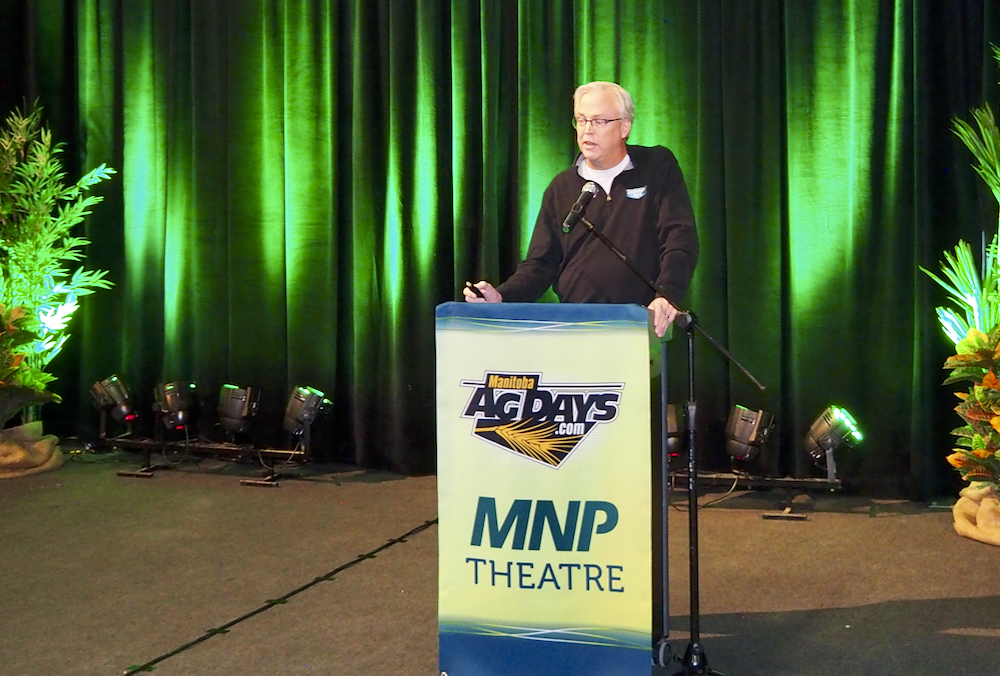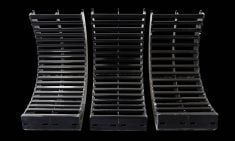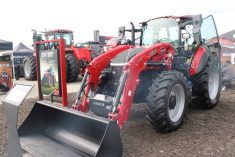Machinery Pete expects high prices for used equipment could be around for a while.
The farm machinery auction guru – Greg Peterson, when he’s off the clock – attracted a packed house during his presentation at Manitoba Ag Days in Brandon this year.
Like many producers grumbling about equipment prices, he has noted the staggering prices that used machinery has been fetching in recent months.
Read Also

Finally getting paid for sustainable farming?
Alberta project says they might have a line on a workable ecosystem credit model to reward farmers for sustainability, and Manitoba might be next
The market started to heat up during the pandemic, an echo of what happened with used automobiles at the time. But, while the pre-owned vehicle market is softening, that’s not the case with farm machinery, he says.
At first blush, the explanation seems simple. Demand is bursting due to high commodity prices and the resulting influx of cash. Supply chains are backed up, causing lengthy delivery delays for new equipment. So, farmers who would otherwise buy new are turning to the used market.
Why it matters: Used equipment prices offer little respite for producers seeking cheaper alternatives to buying new.
But the situation is far more complex than that, Peterson said.
He has been tracking North American auction prices on all types of farm equipment for 33 years. Though the used market caught fire in fall 2020, he was seeing higher prices months before the pandemic.
“It had been about seven years since the last uptime in agriculture, since the spring of 2013,” he said. “That’s a long period where farmers had tough profit conditions.”
Equipment sales lagged during the downturn. But even though dollars were tight, farmers eventually had to replace aging equipment, and Peterson said he saw that play out in used prices.
At the same time, dealerships across North America were divesting themselves of used inventory, partly due to dealership consolidation. That has translated into free-falls in late-model inventory. Peterson estimated that dealerships have almost 80 per cent fewer five-year-old used tractors compared to three years ago.
When COVID-19 hit in spring 2020, Peterson saw an almost immediate bump in used prices.
“It’s somewhat hard to explain, because the money wasn’t there to back it up yet,” he said. “But when everything shifted completely online, all I know is that auction prices went up noticeably within a week.”
That fall, commodity prices began to take off.
“It unleashed this pent-up demand for both new and used equipment, and it was unlike anything I’ve ever seen in 33 years,” Peterson said. “So, when the money kicks in, you’ve got lower used inventory and you’ve got the supply chain mess coming off COVID for new equipment.”
Then there were strikes at John Deere and Case.
“All this is swirling together when farmers have money and need to update their lines of equipment,” said Peterson. “So what we started to see was that new equipment had multiple huge price increases, and even if you wanted one, you maybe couldn’t get one because they only had a certain number to sell.”
That’s when auction prices for used equipment became unhinged.
“It became all about availability,” Peterson said. “It didn’t matter that you had to pay a triple premium; it was about need.”
Farm Credit Canada economist Leigh Anderson says the lender is seeing the same thing.
Late last year, FCC’s annual report on the farm equipment market noted rising prices amid diminished inventories. While it mainly tracks new equipment prices, the report also noted the used market saw increased demand because of pandemic-related shutdowns.
“With limited availability of new equipment and parts, producers were adapting by having additional used equipment available for parts, if needed,” the report read.
Anderson puts much of the blame on supply chain constraints.
“It trickles down to everything. If that new part is delayed coming in, those trades don’t happen right away, but there’s still demand for farm equipment, so it’s pushed prices up.”
What does that mean for the future?
Interest rates will have an effect. The Bank of Canada raised its overnight lending rate in late January to 4.5 per cent. It’s the eighth time in the last 12 months that the bank has made such a move in an effort to cool inflation.
As far as large machinery is concerned, that’s a potential dampener on demand.
“That’s something we’re going to watch through 2023, but up to this point it hasn’t had any effect,” Peterson said.
High commodity prices can’t last forever either. There is some expectation that once commodities turn bearish, equipment will follow suit. Anderson said the supply chain issues appear to be working themselves out.
“There are signs that things are improving, but we’re also hearing reports of new equipment, such as air drills, being delayed,” he said.
Such equipment may not be delivered in time for seeding.
Anderson also sees glimmers of hope in the used market.
“I have heard that the market for some of the older combines there is a little bit better,” he said. “Dealers do have those.”
















